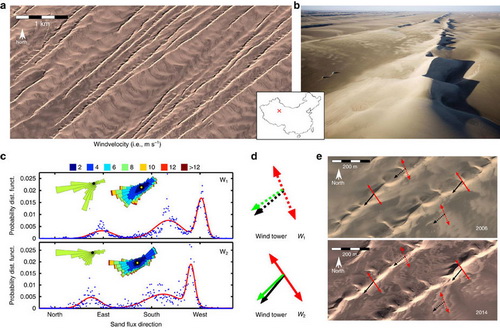Raked linear dunes keep a constant orientation for considerable distances with a marked asymmetry between a periodic pattern of semi-crescentic structures on one side and a continuous slope on the other. Here research result shows that this shape is associated with a steady-state dune type arising from the coexistence of two dune growth mechanisms. Primary ridges elongate in the direction of the resultant sand flux. Semi-crescentic structures result from the development of superimposed dunes growing perpendicularly to the maximum gross bedform-normal transport. In the particular case of raked linear dunes, these two mechanisms produces primary and secondary ridges with similar height but with different orientations, which are oblique to each other. The raked pattern develops preferentially on the leeward side of the primary ridges according to the direction of propagation of the superimposed bedforms. As shown by numerical modelling, raked linear dunes occur where both these oblique orientations and dynamics are met. This research achievement has been published on Nature Communications. 
Fig. Raked linear dunes in the Kumtagh desert. (Image by Lv Ping) |

